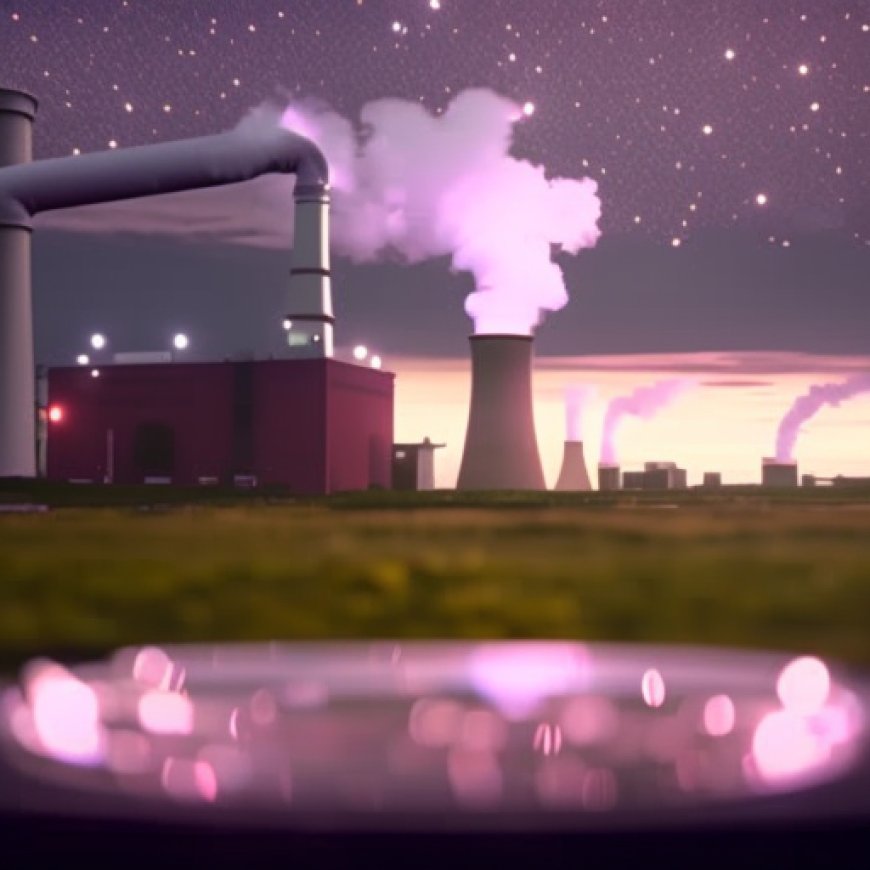EPA restores industrial air pollution rule axed by Trump


The Environmental Protection Agency Strengthens Rule on Toxic Air Pollution

Introduction
The Environmental Protection Agency (EPA) announced on Wednesday that it has strengthened a rule aimed at limiting toxic air pollution from factories, refineries, and other industrial facilities. This move reverses one of the major environmental rollbacks made by former President Donald Trump.
The “Once In, Always In” Rule
In an update posted on its website, the EPA quietly signaled that it had finalized changes to the “Once In, Always In” rule. This rule requires facilities classified as “major” sources of toxic air pollution to always maintain strict pollution controls, even if they are later reclassified.
- EPA considers a facility a “major source” if it annually emits 10 tons or more of a single hazardous air pollutant or 25 tons or more of at least two such pollutants, including arsenic and benzene.
- Inhaling these pollutants carries a range of health risks.
Health Risks of Benzene
Short-term exposure to high concentrations of benzene, a sweet-smelling chemical found in gasoline and other petroleum products, can cause headaches, dizziness, and unconsciousness. Long-term exposure has been linked to a higher risk of cancer, especially leukemia and other blood and bone marrow cancers.
Reversal of the Policy
The “Once In, Always In” policy was first established in a 1995 memo by a top EPA air official under President Bill Clinton. However, the policy was unofficially ended by Trump officials in 2018 and formally rescinded in 2020.
Industry Response
Industry groups have criticized the rule, calling it overly burdensome. The National Association of Manufacturers, in their public comments, stated that complying with existing federal regulations is already costly and confusing, and new regulations can make the burden unsustainable.
Changes to the Rule
Wednesday’s change does not fully restore the Clinton-era policy. It allows some facilities to shift from being considered “major” pollution sources if their emissions fall. However, most facilities would still have to meet strict requirements for toxic pollutants, including benzene and mercury.
Environmental and Public Health Advocates’ Response
Environmental and public health advocates strongly support the “Once In, Always In” policy, as it has helped reduce pollution in poor and minority communities located near industrial facilities. While they praised the EPA’s move, they also called for the agency to go even further in protecting public health and the environment.
Quotes from Advocates
- “While today’s rule is not a full repeal of the 2020 rollback, it is an important step forward,” said Harold Wimmer, president and CEO of the American Lung Association.
- “Communities living near mega polluters have long been forced to endure a toxic mix of deadly chemicals that are well-known to cause cancer and other severe health issues,” said Patrice Simms, vice president of healthy communities at Earthjustice.
Impact of the Trump-era Rollback
According to the environmental law firm Earthjustice, the Trump-era rollback allowed approximately 4,000 operations to increase their toxic emissions.
SDGs, Targets, and Indicators
1. Which SDGs are addressed or connected to the issues highlighted in the article?
- SDG 3: Good Health and Well-being
- SDG 12: Responsible Consumption and Production
- SDG 13: Climate Action
- SDG 15: Life on Land
2. What specific targets under those SDGs can be identified based on the article’s content?
- SDG 3.9: By 2030, substantially reduce the number of deaths and illnesses from hazardous chemicals and air, water, and soil pollution and contamination.
- SDG 12.4: By 2020, achieve the environmentally sound management of chemicals and all wastes throughout their life cycle, in accordance with agreed international frameworks, and significantly reduce their release to air, water, and soil in order to minimize their adverse impacts on human health and the environment.
- SDG 13.2: Integrate climate change measures into national policies, strategies, and planning.
- SDG 15.1: By 2020, ensure the conservation, restoration, and sustainable use of terrestrial and inland freshwater ecosystems and their services, in particular forests, wetlands, mountains, and drylands, in line with obligations under international agreements.
3. Are there any indicators mentioned or implied in the article that can be used to measure progress towards the identified targets?
- Indicator for SDG 3.9: Number of deaths and illnesses attributed to hazardous chemicals and air, water, and soil pollution and contamination.
- Indicator for SDG 12.4: Amount of hazardous chemicals released to air, water, and soil.
- Indicator for SDG 13.2: Integration of climate change measures in national policies and strategies.
- Indicator for SDG 15.1: Conservation and restoration of terrestrial and inland freshwater ecosystems and their services.
SDGs, Targets, and Indicators
| SDGs | Targets | Indicators |
|---|---|---|
| SDG 3: Good Health and Well-being | 3.9: By 2030, substantially reduce the number of deaths and illnesses from hazardous chemicals and air, water, and soil pollution and contamination. | Number of deaths and illnesses attributed to hazardous chemicals and air, water, and soil pollution and contamination. |
| SDG 12: Responsible Consumption and Production | 12.4: By 2020, achieve the environmentally sound management of chemicals and all wastes throughout their life cycle, in accordance with agreed international frameworks, and significantly reduce their release to air, water, and soil in order to minimize their adverse impacts on human health and the environment. | Amount of hazardous chemicals released to air, water, and soil. |
| SDG 13: Climate Action | 13.2: Integrate climate change measures into national policies, strategies, and planning. | Integration of climate change measures in national policies and strategies. |
| SDG 15: Life on Land | 15.1: By 2020, ensure the conservation, restoration, and sustainable use of terrestrial and inland freshwater ecosystems and their services, in particular forests, wetlands, mountains, and drylands, in line with obligations under international agreements. | Conservation and restoration of terrestrial and inland freshwater ecosystems and their services. |
Source: washingtonpost.com








